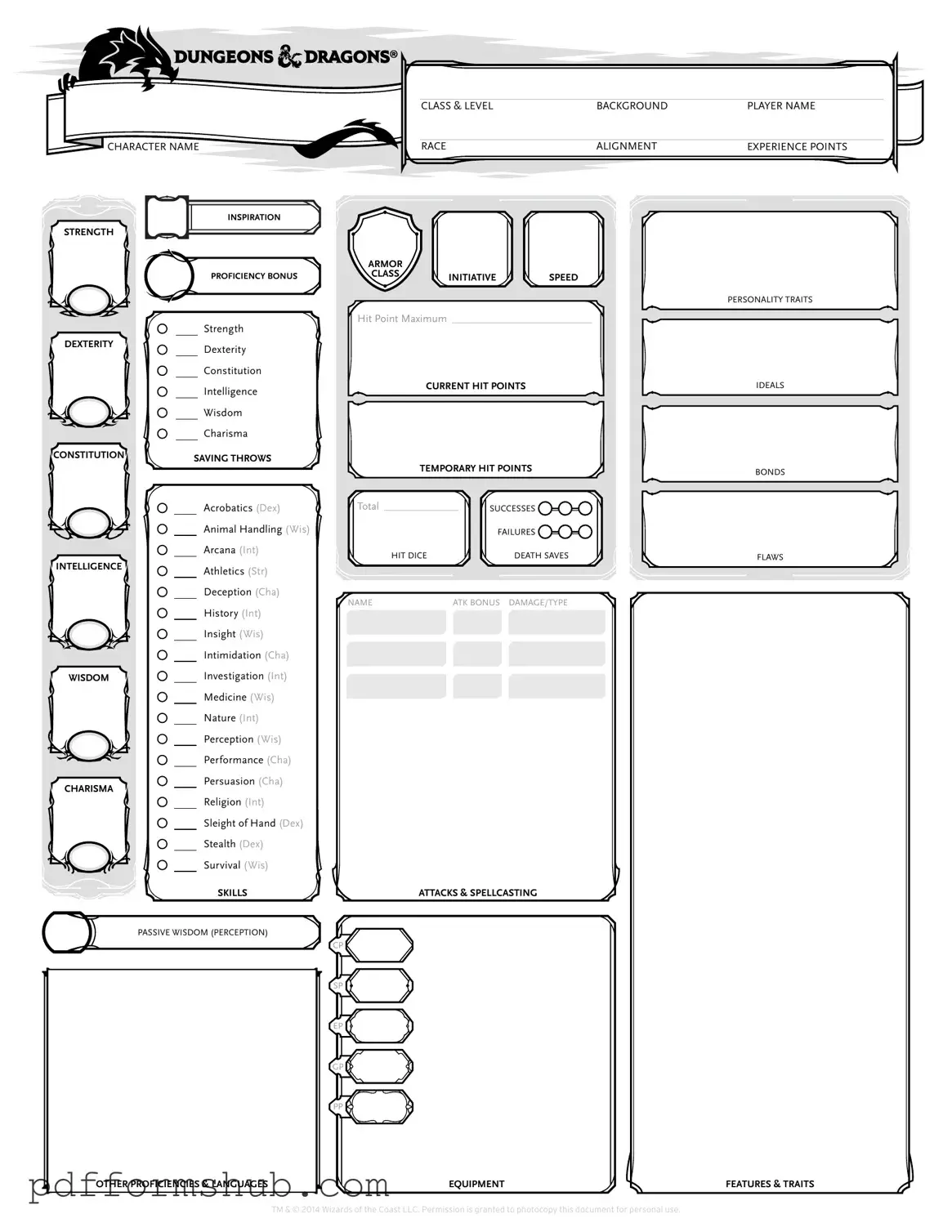The Dungeons & Dragons (D&D) character sheet serves as an essential tool for players, encapsulating the myriad aspects of a character's identity within the game. This form is not just a simple piece of paper; it is a comprehensive document that tracks a character's abilities, skills, and personal background. Players fill in details such as their character's race, class, and alignment, which shape their role in the game. Additionally, the character sheet includes sections for recording hit points, armor class, and saving throws, which are vital for gameplay mechanics. Players also note down their character's equipment, spells, and special abilities, all of which contribute to their unique playstyle. Beyond the mechanical aspects, the sheet often has space for personal notes and character backstory, allowing players to delve deeper into their character's motivations and history. This multifaceted form not only aids in gameplay but also enhances the storytelling experience, making each session more immersive and engaging.
